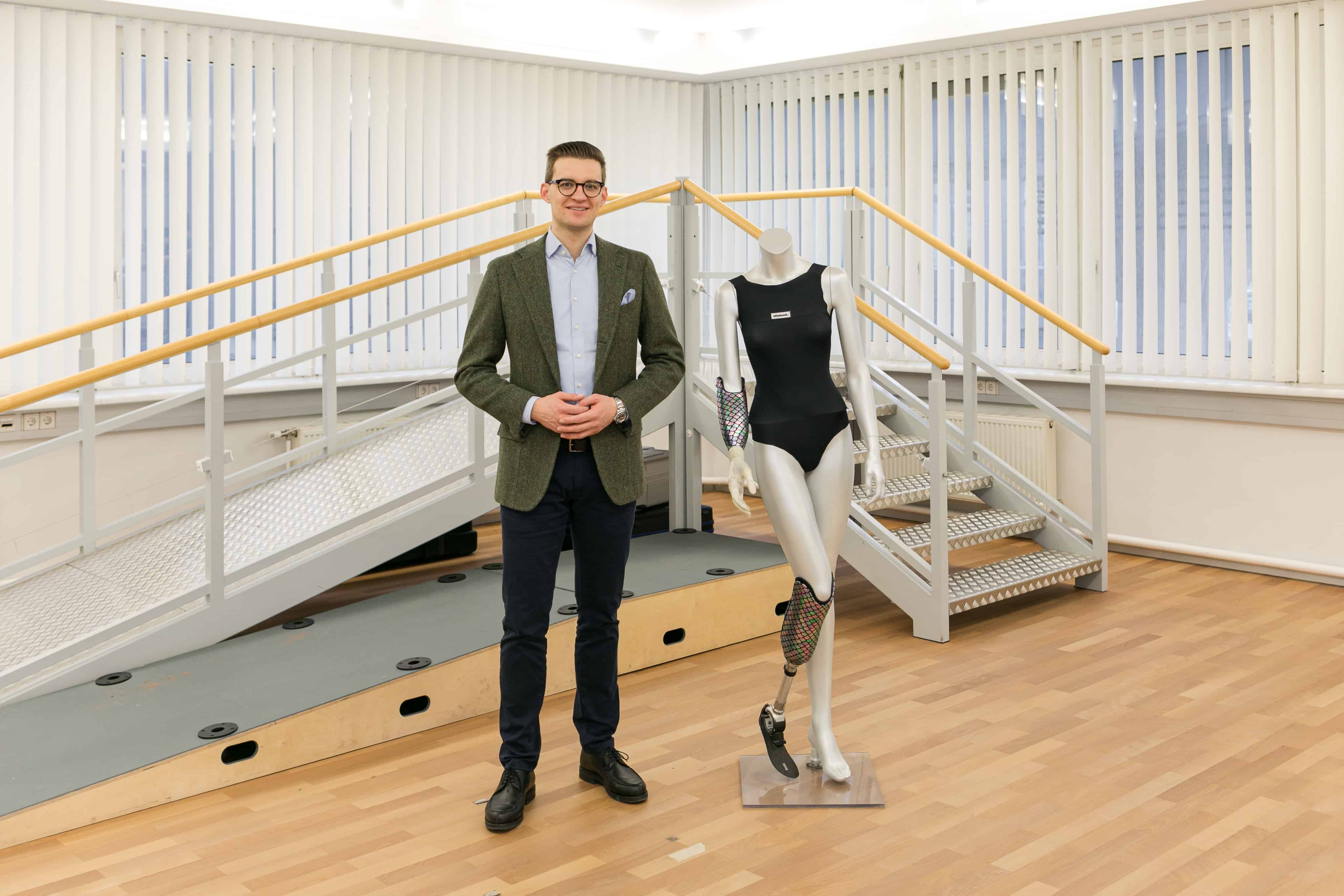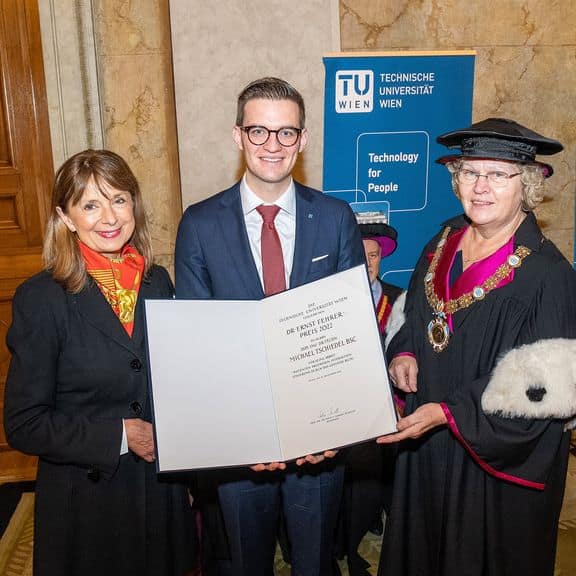
Despite advanced technology, walking with a knee prosthesis is still physically and mentally demanding for its owner. The processes are sometimes not yet ideal, causing users to unconsciously adapt to the behavior of the prosthesis. In the long term, this can lead to secondary issues such as hip problems or excessive strain on the healthy leg. An ideal knee prosthesis should adapt to the behavior of the user, says Dr. Michael Tschiedel, who researched the topic in his dissertation at the Vienna University of Technology, Austria, under the guidance of Professor Eugenijus Kaniusas. The research was conducted in close cooperation with Otto Bock Healthcare Products GmbH.
Complex system
Our natural knee gives us support when we stand and flexibility when we walk. Underlying this is a complex system consisting of cartilage, muscles, and soft tissues. We are not aware of this complexity since we control our knee unconsciously and automatically. Knee prostheses, meanwhile, require complex technology. After all, “they replace not only the structure of the leg but also its biological function. To provide support and prevent bending in, they must provide highly cushioned flexion resistance. And to allow swing-through while walking, they must have loose cushioning,” Tschiedel explains.

Infinitely variable control
State-of-the-art technology in the high-end sector is single-axis microprocessor-controlled knee prostheses that come very close to natural walking. This is made possible by an interplay of mechanics, electronics, and firmware. Sensors detect whether the person is walking, standing still, sitting, or standing up in real time. The sensor data is passed to the integrated hydraulic unit, which can then select and continuously regulate the required control value. Tschiedel compares this mechanism in simple terms to a door hinge equipped with a soft-close mechanism causing the door to close slowly.
Misjudging the situation could be unpleasant. If the knee suddenly locks while walking, for example, in the worst case the person could fall. Safety must therefore be a top priority in prosthetic technology, the researcher says.
Recording physical variables
Ottobock reached a milestone in prosthesis design 25 years ago with the C-Leg. Since then, the company has been using sensor data for the microprocessor-based control of knee prostheses. The integrated sensors record the forces, angular velocities, and accelerations that occur, as well as a six-axis spatial position unit that determines the position and rotational speed of the knee joint system in space. As a result, the control system knows exactly how the prosthesis moves in space, how the upper and lower legs change in relation to each other, and derives the exact gait phase and activity from this.
Until now, however, the assessment of the situation was based solely on physical variables that can be measured directly in the prosthesis. The environment was not taken into account, explains Tschiedel.
Integration of environmental information
He wanted to incorporate environmental data for the first time to find out whether this would make the motion sequences of the knee prosthesis even more natural, drawing inspiration from automotive industry technologies that analyze the environment of self-driving cars. Tschiedel investigated similar technologies for their suitability for leg prostheses. In particular, he used ultrasound and camera sensors to capture the behavior of the other – healthy – leg. He assumed that information about the behavior of the healthy knee would improve the control of the knee prosthesis.
“In the human body, movements occur in a linked system. We unconsciously use this coupling to synchronize our movements and control one leg in relation to the other. It is precisely this natural coupling that we tried to emulate to improve the control of the knee prosthesis,” Tschiedel explains.
More intuitive walking with less effort
After proof-of-concept and a clinical trial, it is clear that this approach does indeed improve things. “Using sensors and a sophisticated algorithm directly integrated into the prosthesis, the joint knows exactly how the healthy, opposite leg is moving. This makes walking more intuitive and is less physically and mentally demanding,” Tschiedel said.
The new technology makes the knee prosthesis both more suitable for everyday use and safer. Users do not have to control the system via a device. Instead, the integrated control system responds automatically to their movement. As a result, users do not have to concentrate on each step.

About Michael Tschiedel
Michael Tschiedel (28) graduated from the Vienna University of Technology with a bachelor’s degree in electrical engineering and information technology and a master’s degree in biomedical engineering. In 2022, he received his doctorate in technical sciences sub auspiciis Praesidentis rei publicae. In December 2022, he received the Dr. Ernst Fehrer Award from the Rectorate of the Vienna University of Technology for his research on a data-driven knee prosthesis. The prize is endowed with €8,000 and is awarded annually for outstanding technical research achievements with practical applicability.
Title photo: Michael Tschiedel with the intelligent knee prosthesis (c) Akos Burg.

